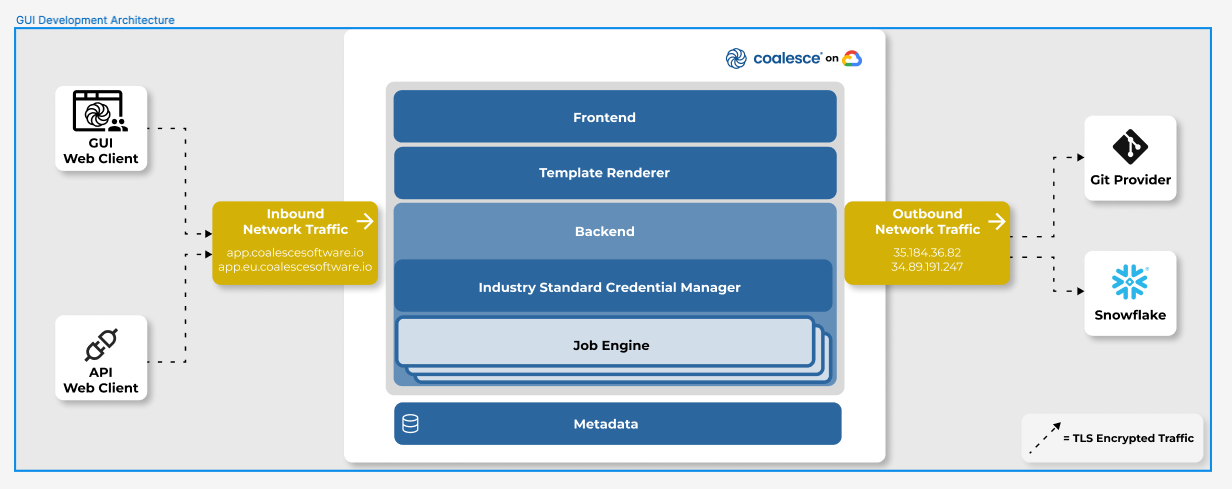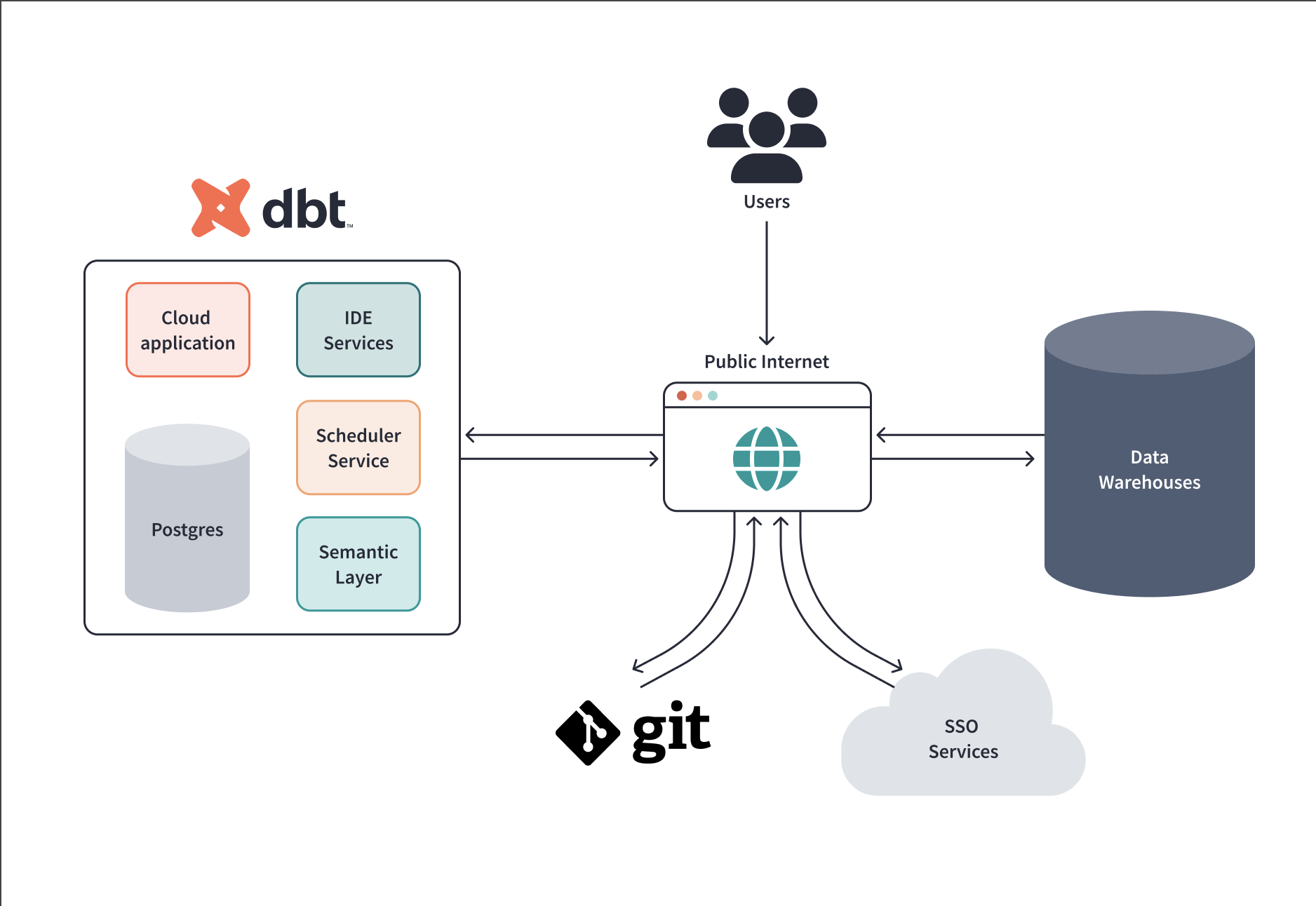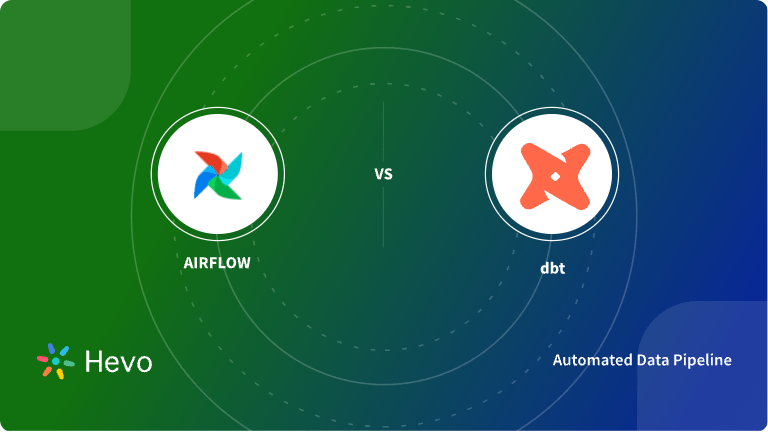Choosing the right data transformation tool can make all the difference for efficient data workflows. Coalesce and dbt are two of the most popular choices that bring unique features to the table for data teams. While dbt is known for its SQL-based, modular approach to transformations, Coalesce provides a low-code, column-aware interface with automation capabilities. But which one is the best suited for your needs? In this blog, you can see the comparison between Coalesce vs dbt along lines like usability, automation, collaboration, and pricing so that you can make a well-informed decision. Let’s dive in!
Table of Contents
Overview of Coalesce

Coalesce is a data transformation tool designed for modern data teams. It automates SQL-based transformations, optimizing data workflows and efficiency through column-aware lineage and version control. It also scales for complex data models and requires minimal manual effort. Coalesce is best known for how easily it integrates with Snowflake so users can maximize the benefits of Snowflake’s cloud data platform for optimal performance and fast transformations.
Advantages and Key Features of Coalesce
- Automated Column Propagation: Coalesce automatically propagates new columns to all downstream models that will use them; hence, one can save lots of time and ensure data consistency across different projects.
- No-Code JSON Unnesting: Writing no code makes it easy to unnest JSON, thus allowing for faster complex data transformations and saving user effort.
- Table Models with Truncate + Insert: This feature helps preserve the integrity of data during transformations by not compromising Snowflake’s time travel functionality.
- User-Friendly GUI: Coalesce provides a graphical user interface for pre-SQL, including documentation and testing, without requiring users to work with YAML or code.
- Snowflake Optimized: Coalesce is built specifically for Snowflake, with features such as support for transient tables, dynamic tables, and streams to ensure integration and performance for Snowflake users.
This makes Coalesce a great option for teams focused on Snowflake, providing a combination of automation, user-friendliness, and performance.
Limitations of Coalesce
- No Native Scheduler: Coalesce does not have a native scheduler. Users will have to depend on third-party scheduling solutions such as Snowflake Tasks or stored procedures.
- Snowflake-Only Compatibility: Coalesce is specific to Snowflake and might not be appropriate for businesses working on other types of data warehouses or want some form of flexibility within their tech stack.
- Vendor Lock-In: Because Coalesce is not open source and tightly integrated with Snowflake, it can be difficult for businesses to migrate transformations to other platforms, which leads to being locked with this vendor.
- Learning Curve: Though the interface is intuitive, there is a learning curve in knowing what it does and can do for new users.
Experience a new level of efficiency with Hevo Transformer. Quickly transform data directly within your warehouse using dbt Core, all while seamlessly integrating with your warehouse and Git for enhanced collaboration.
What does Hevo Transformer Offer?
- In-Warehouse Transformation: Transform your data directly in the warehouse, reducing latency and simplifying your data workflows.
- Seamless Git Integration: Hevo Transformer integrates effortlessly with your Git repository, allowing your team to collaborate on transformation logic in real-time.
- Scalability and Flexibility: Hevo Transformer scales with your business, adapting to growing data needs and enabling more sophisticated transformation workflows.
Rated 4.4 on G2, Hevo offers a simple solution for your data transformation needs. Discover how companies like Postman have benefited from Hevo.
Get Early Access NowOverview of dbt
dbt (Data Build Tool) is an open-source framework that enables data teams to write modular, version-controlled transformation logic while maintaining data quality and governance while transforming data in the warehouse using SQL. It automates dependency management and makes it easy to create reusable data models. It integrates effortlessly with modern cloud data warehouses such as Snowflake, BigQuery, and Redshift. Hence, the analytics workflows are scaled efficiently. Since it has a strong community and extensive documentation, dbt has been widely adopted for building reliable and maintainable data pipelines.
Advantages and Key Features of dbt
- SQL-Based Transformations: SQL is used to create data transformations, which enables users to leverage the full power of cloud data warehouses such as Snowflake, BigQuery, and Redshift.
- Designed for Modern Data Warehouses: dbt is specifically designed to work with cloud-based data warehouses, and it makes extensive use of all the features in these platforms that enhance the data transformation speed, such as parallel processing, clustering, and materialized views.
- Incremental Processing: dbt prevents wasting time taken by data processing time and minimizes resource usage by only transforming new or updated data, making it more efficient for large datasets.
- Version Control and Collaboration: dbt integrates well with Git, so tracking changes, collaborating with teams, and smooth workflows are easy for large-scale projects.
- Rich Documentation and Testing: dbt provides built-in testing as well as automated documentation generation, which ensures data quality is not lost and helps teams to understand and maintain their transformations.
Limitations of dbt
- Manual Process for Large-Scale Transformations: It becomes complex in dbt when required to manage a large number of transformations, especially for many columns. This makes it challenging to scale operations when working with complex datasets.
- Complexity with Large Workflows: While dbt is SQL-based and easier to begin with, managing complex workflows with multiple dependencies can get tricky. This would require careful planning, making it more suitable for data engineers rather than casual data analysts.
- Dependency on Modern Cloud Data Warehouses: dbt is built to work well with modern cloud data warehouses like Snowflake, BigQuery, and Redshift. It might not be as efficient if the legacy database or some other storage system has to be used
- Limited Data Integration: dbt focuses more on the transformation part of ETL and does not have robust features for data extraction and loading. It is normally used with another tool, such as Hevo or Stitch, to construct a pipeline, making it more complex.
Coalesce vs dbt – Key Features Comparison
Feature | Coalesce | dbt |
| Data Transformation | Visual, drag-and-drop interface | SQL-based, requires scripting |
| Ease of Use | User-friendly, no SQL needed | Requires SQL knowledge, but has strong community support |
| Data Warehouse Support | Works only with Snowflake | Supports Snowflake, BigQuery, Redshift, and more |
| Version Control | Uses Git, but setup requires manual steps | Fully Git-integrated with CI/CD automation |
| Testing & Documentation | Auto-generates documentation and data lineage | Automated testing, version control, and CI/CD support |
| Orchestration | No built-in scheduler, relies on external tools | Automates transformation with built-in scheduling and deployment |
| Pricing | Custom pricing, requires contact for a quote. 14-day free trial available. | Free for individuals, paid plans for teams and enterprises |
dbt vs Coalesce – Detailed Comparison
1. Approach to Data Transformation
- Coalesce: Coalesce uses a graphical interface that’s very easy to use for designing and handling data transformations visually. This tool is very helpful for more complex workflows, as the user doesn’t have to write SQL code to manage transformations.

- dbt: dbt uses a SQL-based approach, where data transformations are defined using SQL scripts. It uses the power of modern data warehouses and is perfect for users comfortable with coding to create and manage complex transformations directly in the database.

2. Ease of Use
- Coalesce: Coalesce uses a graphical UI with a drag-and-drop design and is easy to use, even for those who do not have technical experience. The interface is clean and user-friendly, lowering the entry barrier for data teams. It also has automatic documentation and data lineage to make workflows easier.
- dbt: dbt is SQL-based, which makes it accessible to users who are familiar with SQL, such as data analysts and engineers. There is a slight learning curve, especially when incorporating Jinja syntax. Still, the cloud-based IDE of the platform and active community support make it easier to adopt and work with over time.
3. Data Warehouse Compatibility
- Coalesce: It is specifically built for Snowflake, making it exclusive to Snowflake users and could cause a potential vendor lock-in.
- dbt: Supports cloud-based data warehouses like Snowflake, BigQuery, and Redshift. This offers flexibility but it may not perform as well with traditional on-premises databases.
4. Version Control
- Coalesce: It uses Git for version control but focuses on a GUI for faster development. For setup, it requires some manual steps, like adding Git credentials.
- dbt: It fully integrates with Git for version control and encourages best practices of CI/CD. It automates deployment and simplifies managing various types of environments (Dev, QA, Prod).
5. Testing and Documentation
- Coalesce: The documentation and data lineage are automatically generated; thus, it becomes easier to manage workflows. Testing is straightforward via the GUI, but it’s sometimes unclear how tests will be executed.
- dbt: This provides a cloud-based IDE with features like syntax highlighting and error checking for testing. It automates testing, integrates version control, supports CI/CD for deployment, and follows best practices for data pipelines.
6. Orchestration and Automation
- Coalesce: It does not have a built-in scheduler, and one must use external orchestration tools like APIs, GitHub Actions, or Azure Pipelines. It emphasizes automation through rich APIs and environment management. This ensures high-quality data handling.
- dbt: It automates transformations and orchestration processes through a code-based approach, including best practices like version control, automated testing, and CI/CD deployment. It helps manage environments and simplifies the migration process.
7. Pricing
- Coalesce: Coalesce offers custom pricing, and you get a 14-day free trial. You have to reach out to the sales team for a quote.
- dbt: dbt pricing is as follows:
- Free/Developer: $0 for one developer seat, 3,000 models per month, and essential features like a browser-based IDE, job scheduling, and GitHub support.
- Team: $100 per user/month, supporting up to 8 developers with more models, additional integrations, and advanced features like API access and read-only seats.
- Enterprise: Custom pricing with unlimited projects, advanced security features like SSO, and professional services.
When to Choose Coalesce Over dbt
- You use Snowflake exclusively – Coalesce is built specifically for Snowflake, making it a seamless fit.
- You prefer a no-code or low-code approach – Its drag-and-drop interface makes data transformations easy without writing SQL.
- Your team includes business analysts or non-technical users – The graphical interface makes data transformation simple for teams with limited SQL experience.
- You need automated documentation and data lineage – Coalesce automatically generates documentation, making workflows more transparent.
- You want to speed up development – The GUI-based approach accelerates transformation design while still integrating with Git for version control.
When to Choose dbt Over Coalesce
- You need flexibility across multiple data warehouses – Unlike Coalesce, dbt supports Snowflake, BigQuery, Redshift, and more.
- Your team is comfortable with SQL – dbt is fully SQL-based, making it a great fit for data analysts and engineers who prefer code over a visual UI.
- You require strong version control and automation – dbt integrates seamlessly with Git, CI/CD, and automated testing for a smooth development process.
- You need built-in orchestration – dbt has scheduling and deployment capabilities, reducing the need for separate orchestration tools.
- You want community support and open-source flexibility – dbt has an active user community with extensive documentation and open-source capabilities, making it easier to build and scale.
Summary
Both Coalesce and dbt are powerful data transformation tools, but the right choice depends on your use cases. Coalesce is best for teams working on Snowflake and prefers a visual, no-code approach for managing data transformations efficiently. On the other hand, dbt suits teams interested in flexibility across many data warehouses, looking for robust version control, and SQL-based automation. Consider your team’s technical expertise, the workflow’s complexity, and the data warehouse setup while selecting the best tool to achieve your data transformation goals and simplify your data pipeline.
Looking for a modern, seamless transformation solution? Check out Hevo Transformer—an intuitive, dbt Core-powered transformation tool that lets you model and transform data directly in your warehouse while integrating smoothly with Git for effortless collaboration. Get early access and experience the next level of efficiency today!
FAQs
1. What is the alternative to dbt?
Coalesce is a strong alternative that offers a GUI-based approach with automation and version control. The other options include Apache Airflow and Prefect for orchestration, and Dataform for SQL-based transformations. The best choice depends on your team’s workflow and preferred level of automation.
2. When should I use Coalesce?
Use Coalesce if you are looking for a GUI-driven data transformation tool with built-in automation, version control, and strong Snowflake integration. This is best for teams seeking speed, user-friendliness, and flexibility without extensive SQL scripting.
3. Who is dbt not recommended for?
dbt does not work too well for teams that are entirely non-SQL users, teams that do not work with cloud-based data warehouses, or teams requiring completely GUI-based approaches. It requires SQL knowledge and works best in a modular, code-first workflow.













